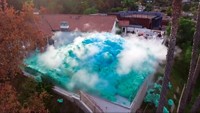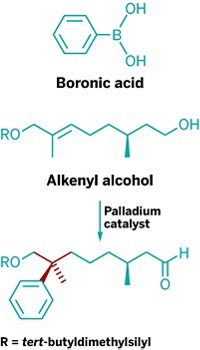Advertisement
Grab your lab coat. Let's get started
Welcome!
Welcome!
Create an account below to get 6 C&EN articles per month, receive newsletters and more - all free.
It seems this is your first time logging in online. Please enter the following information to continue.
As an ACS member you automatically get access to this site. All we need is few more details to create your reading experience.
Not you? Sign in with a different account.
Not you? Sign in with a different account.
ERROR 1
ERROR 1
ERROR 2
ERROR 2
ERROR 2
ERROR 2
ERROR 2
Password and Confirm password must match.
If you have an ACS member number, please enter it here so we can link this account to your membership. (optional)
ERROR 2
ACS values your privacy. By submitting your information, you are gaining access to C&EN and subscribing to our weekly newsletter. We use the information you provide to make your reading experience better, and we will never sell your data to third party members.
Education
Speedy in Seattle, That's a Mighty Big Nanotube, It's a Dirty Job, But...
by Bethany Halford
June 13, 2005
| A version of this story appeared in
Volume 83, Issue 24
A clever motorist with a little chemical know-how managed to pull a fast one on Washington state's Department of Licensing. The Seattle Times reports that there's a black 2002 Audi speeding around Seattle with the vanity license plate "C9H13N."
Although there are a number of compounds with that formula--a quick scan of Newscripts' Aldrich catalog lists 26--the most notorious is the stimulant amphetamine, known on the street as speed. Washington state regulations ban vanity plates that refer to alcohol or illegal substances, but Brad Benfield, spokesman for the Department of Licensing, told reporters: "It's pretty easy for something like this to slip through. With a series of letters and numbers, if you're not a chemist, it doesn't ring a bell."
The Seattle Times notes that because amphetamine is used in some medicines, most commonly in treatments for narcolepsy or hyperactivity disorders in children, the license plate might not be illegal after all. Benfield also said that the motorist's application stated that C9H13N is the formula for red food coloring.
The Newscripts gang wonders if readers have come across other chemistry-related vanity plates in their travels. We know of one chemistry professor who used to tool around in a little sports car with "ORGANIC" plates. And, although not chemical, one of us recalls a hellish road trip from New York to St. Louis in a rattletrap with the license plate "TNK 666." That plate, incidentally, wasn't a vanity plate but a standard issue plate from the Missouri Department of Motor Vehicles.

When scientists try to give the public an idea of how small nanotubes are, they usually employ the human hair scale--as in a carbon nanotube is about 10,000 times thinner than a human hair. Houston's Rice University recently had to switch to the skyscraper scale when building the world's largest single-walled carbon nanotube model.
At 1,181 feet long, the gigantic blue SWNT molecular model was longer than three football fields, or, according to the skyscraper scale, taller than the Chrysler Building in New York City. It took more than 100 people about four hours to build the massive model, and the "nanotube" was so long that it spilled across the campus's main thoroughfare, forcing local traffic to take a detour.
Nobel Laureates and Rice professors Richard E. Smalley and Robert F. Curl Jr. anchored the ends of the giant SWNT while students sent soccer ball "electrons" speeding from one end to the other.
If you've ever driven through Nebraska's hog country on a hot summer day, then you know what Jerzy Dec and his colleagues are up against--the insufferable stench of swine manure.
The countryside may be picturesque, but that doesn't mean it smells good. With suburbs creeping farther into farmland and hog farmers expanding their operations, a contentious "war of the noses" has broken out.
Armed with a condiment in one hand and an antiseptic in the other, Dec and his colleagues at Pennsylvania State University think they may have found an easy and inexpensive solution to the porcine problem. Using a mixture of horseradish root and hydrogen peroxide, the researchers found that they were able to curtail the malodorous manure (J. Agric. Food Chem. 2005, 53, 4880).
The mixture's stink-fighting secret lies with the large amount of peroxidase enzymes in the horseradish root. These enzymes oxidize the manure's smelly phenols to reactive phenoxyl radicals that then polymerize. A panel of expert sniffers found that manure samples treated with the horseradish mix smelled about 50% less intense than untreated manure. Lab tests indicate that the potion's smell-sapping power lasts about three days.
This week's column was written by








Join the conversation
Contact the reporter
Submit a Letter to the Editor for publication
Engage with us on Twitter